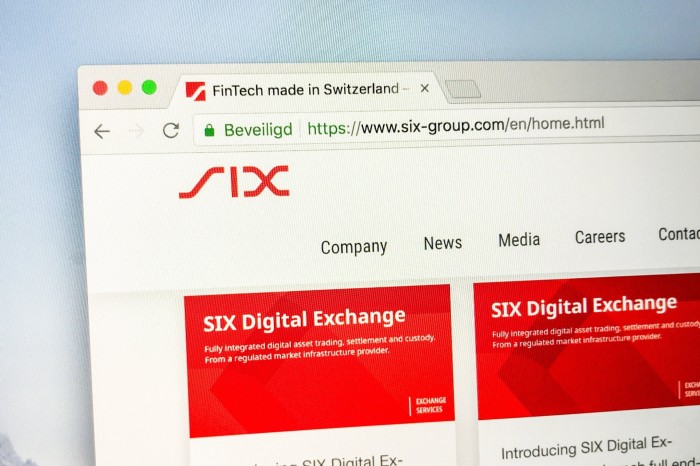What are digital bonds and how are they issued?

Roula Khalaf, Editor of the FT, selects her favourite stories in this weekly newsletter.
Banks are turning to blockchain technology to experiment with issuing ‘digital’ bonds — a move that, proponents say, could revolutionise the slow and costly process of issuing debt.
At its simplest, blockchain is a digital ledger that stores, verifies and records transactions. The technology came to prominence for underpinning bitcoin, the world’s most popular cryptocurrency. But advocates say integrating blockchain into traditional financial markets could lead to more efficient processes and cost savings for banks and their investors.
Larry Fink, chief executive of asset manager BlackRock, has even heralded the use of blockchain for tokenising traditional asset classes as the “next generation” for financial markets.
Several banks have experimented with using blockchain ledger technology to issue bonds, in an attempt to make the process more efficient.
The European Investment Bank, the lending arm of the EU, is one leading institution that has issued bonds on the blockchain. So far, it has issued four, including a two-year £50mn bond and an SKr1bn green digital bond, the proceeds from which, it has said, will go towards climate projects. Other lenders that have issued bonds on the blockchain include Swiss bank UBS, Spain’s Santander and the World Bank.
What are the advantages of issuing bonds on the blockchain?
Mohamed Damak, a senior director in financial services at S&P Global Ratings, says digital bonds mean banks “end up with a smoother process of issuance by reducing the number of intermediaries” and those lenders that have so far launched digital debt “want to see if this could help them to issue bonds in a much more efficient and speedy way”.
For issuers, cost savings are a key driver for creating digital bonds. The blockchain technology records and updates information, including the asset’s ownership, transaction history and regulatory requirements, cutting the need for manual work by back-office and middle-office staff. Settlement is also much faster than the traditional two to three days, with money typically flowing to the issuer immediately once the bond has been priced.
“When you do an issuance, that settles within minutes or seconds of issuing,” says David Newns, head of SIX Digital Exchange, a stock exchange and central securities depository (CSD). “From a treasury perspective, you can see you immediately hold that bond.”

Using blockchain technology could save at least 35-65 per cent of the costs associated with issuance, according to a study by German fintech Cashlink. Blockchain automates processes such as updating bond documents and recording trades — acting, essentially, as a single standardised database.
The technology also reduces the number of intermediaries involved. For example, the debt does not need to be registered at a CSD. Corporate actions such as coupon payments or returning capital could also be automated, cutting costs and paperwork.
“You can automate a lot of aspects of the security that have historically been a lot more manual and typically require multiple steps,” says Newns, whose exchange has listed three digital bonds since its launch in 2021.
How many digital bonds have been issued?
Despite the prospect of a cheaper, more efficient way to issue bonds, digital debt volumes remain a tiny part of the vast global debt market. Just $500mn-worth of digital bonds were issued in the year to September 12, according to S&P Global Ratings, while $6.3tn worth of US bonds alone were issued in the same period, according to the Securities Industry and Financial Markets Association.
For the asset class to take off, it will take time to build the technological infrastructure for banks and their investors, and to build confidence in a market that is now showing more enthusiasm for other technologies, such as generative artificial intelligence.
“The whole digital securities world in the institutional space is one that requires construction — it’s a building project,” says Newns.
What is holding back issuance of digital bonds?
The obstacles to Wall Street banks fully embracing blockchain are numerous — the technology, itself, being number one. “For the time being, it’s mainly testing the tech, testing the platforms,” says Damak, adding that “the numbers at this stage are still small”.
Investors are also not fully prepared for buying and trading digital bonds, as they, too, need to have the right technology in place. “You typically have very few investors — sometimes it’s the banks themselves,” says Damak. He adds that the digital bonds issued so far have been dual in nature, meaning that both a digital and traditional version exists. “If the digital bond fails, there’s usually a back-up traditional bond that takes over so investors are paid,” he explains.
Last year, UBS issued a SFr375mn bond, listed on both SIX’s digital and traditional exchange.
Issuers are also conscious of the risks of creating digital bonds. The instruments “can carry some novel risks, namely operational, legal and cyber-related”, S&P Global Ratings warned in a recent report.

Comments